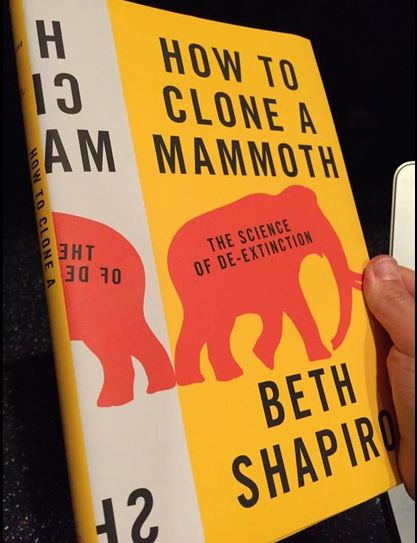Scientists at Harvard University have inserted 14 woolly mammoth genes into the live DNA of a modern elephant, bringing them a step closer to Jurassic Park style cloning of prehistoric creatures – de-extinction.
George Church, professor of genetics at Harvard University, and colleagues analyzed mammoth DNA from specimens preserved in Arctic permafrost. They then reproduced exact copies of fourteen mammoth genes.
The fourteen mammoth genes were then integrated into a modern elephant’s genome, where they functioned as normal DNA.

The Woolly Mammoth and Asian Elephant are closely related. (Image: Wikimedia)
The geneticists used CRISPR (clustered regularly interspaced short palindromic repeat), a new technique which allows them to edit DNA precisely, taking out bits of modern elephant DNA and replacing them with those from a mammoth.
In an interview with the Sunday Times, Prof. Church said:
“We prioritised genes associated with cold resistance including hairiness, ear size, subcutaneous fat and, especially, haemoglobin (a red protein responsible for transporting oxygen in the blood). We now have functioning elephant cells with mammoth DNA in them.”
Modern Asian elephants and mammoths are closely related through a common ancestor that lived 2.5 to 5 million years ago. During the last Ice Age, human hunting virtually killed off all mammoths.
A few mammoths continued to survive on Wrangel Island in the Arctic Ocean, between the Chukchi Sea and East Siberian Sea, until approximately 3,300 years ago. These were the specimens Prof. Church and colleagues used for the DNA anlysis.
There is currently a race between three teams of scientists to reconstruct an entire mammoth genome. When that is achieved, in theory, real mammoths could be recreated.
The science of de-extinction
In her new book – How to Clone a Mammoth: The Science of De-Extinction – Beth Shapiro, associate professor of ecology and evolutionary biology at the University of California, Santa Cruz, she explains that according to science, extinct species like mammoths and passenger pigeons could be brought back to life.
Prof. Shapiro, a pioneer in ancient DNA research, walks the reader through the astonishing and controversial process of de-extinction.

Prof. Shapiro believes de-extinction could be useful for revitalizing modern ecosystems. (Image: Twitter)
Princeton University Press says Prof. Shapiro’s book covers several interesting aspects of de-extinction “From deciding which species should be restored, to sequencing their genomes, to anticipating how revived populations might be overseen in the wild, Shapiro vividly explores the extraordinary cutting-edge science that is being used–today–to resurrect the past.”
Prof. Shapiro also discusses the practical benefits and ethical challenges of bringing extinct species back to life.
The author believes the ultimate goal of de-extinction should be the revitalization and stabilization of current ecosystems. “Elephants with genes modified to express mammoth traits could expand into the Arctic, re-establishing lost productivity to the tundra ecosystem,” she suggests.
Video – Prof. Shapiro discusses de-extinction
